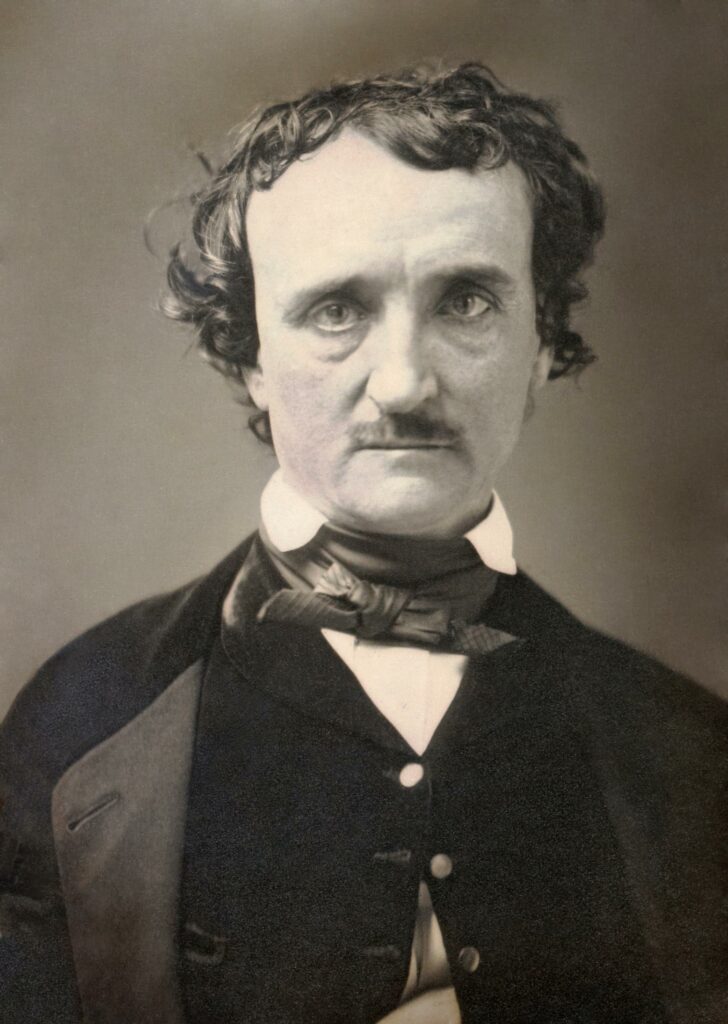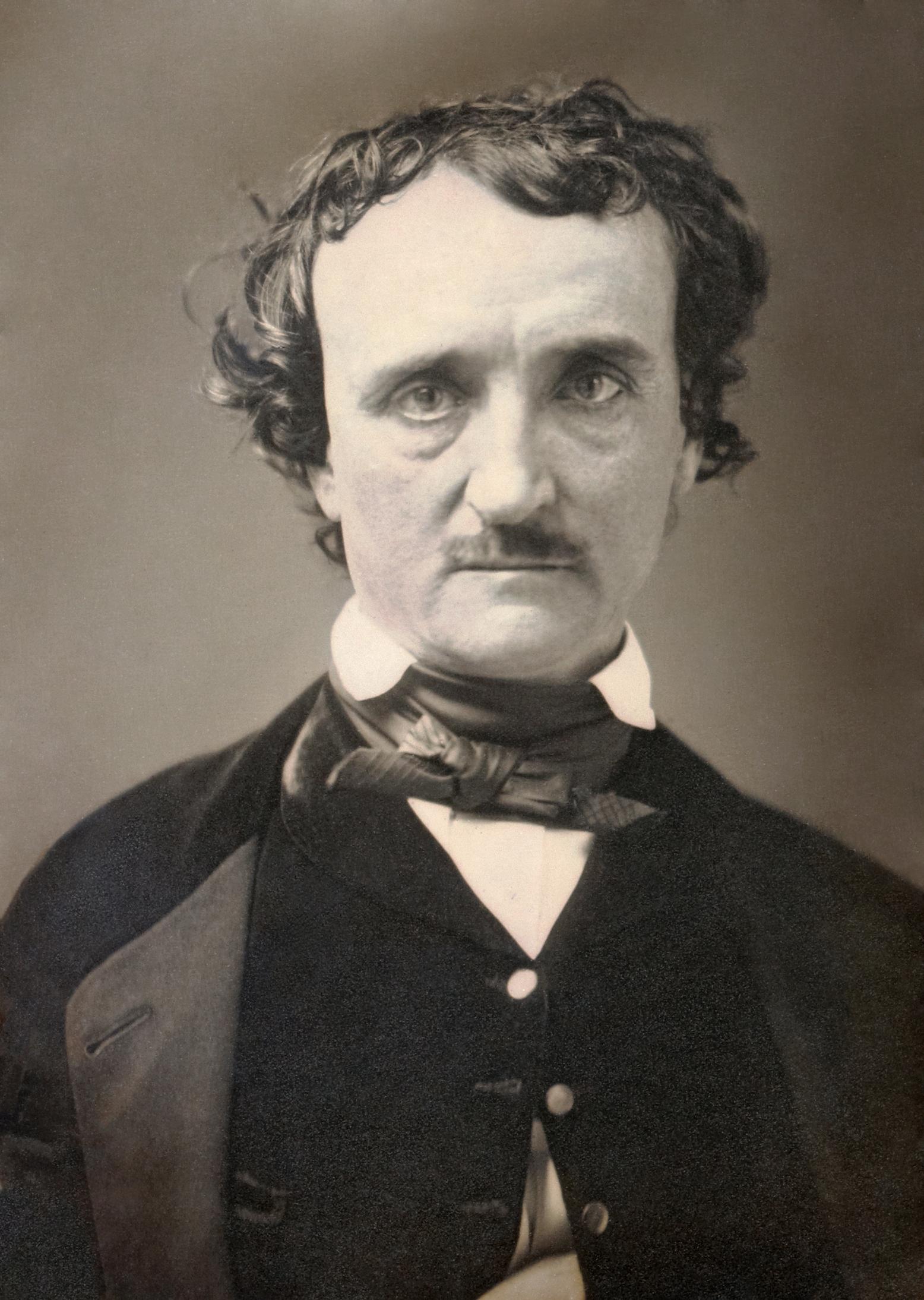The Poesoning of Edgar Allen
Vatican Jesuits, historical poisoners
SOURCE https://eastghost.com/intrigues/poesoned
‘Celebrity author’ of his time, Edgar Allan Poe dismissed the Jesuits’ then-fresh Big Bang Theory thusly: An infinite number of stars in the supposed Universe would make night sky appear bright as day. Was EAP poesoned to silence his contrariana?
Jesuits, formed to counter the Protestant Reformation, are ‘shock-troops’ of Vatican, historically known as poisoners. Regard Their vow to “extirpate” Protestants, Freemasons and non-Catholic heretics which lists a “poison cup” amongst many other techniques. Here was admitted means for murder.
Overall Jesuit Cosmology minimizes humanity as insignificant, meaninglessly awash in infinitude with unfathomable expanse “scientifically” distancing thus disconnecting humans from God; it never brings God closer. Meanwhile, Jesuits seek generally to universally insinuate Pope as sole path for masses to God on Earth.
The curiously downplayed (still to present-day, see “WHY SUCH CURIOUSLY CONTINUING CONFOUNDAGE” below) “EUREKA” is EAP’s longest and self-proclaimed greatest work. EUREKA examines Ober’s (contradictive) Paradox: In an infinite Universe, how is the night sky dark despite the claimed infinite number of suns? This confounds the Jesuits’ humanity-minimizing Cosmology of Infinitude, giving the first plainly comprehensible explanation of how the night sky is dark despite supposed infinitude of stars.
In EUREKA, EAP claimed, among other things, that the universe is finite – in 1848 a speculated finite-aged universe presented a more philosophical phraseology of Newton’s Law of Gravitation, positing gravity as nothing but the attraction of every atom to the other atoms: “Every atom, of every body, attracts every other atom, both of its own and of every other body, with a force which varies inversely as the squares of the distances between the attracting and attracted atom.”
Regarding the Olbers’ Paradox, EAP suggested that the universe is not old enough to be endless in size (most reasonably: infinitude in distance requires infinitude in time), and even if it somehow were, we see only a tiny part of it and thus our observed part contains too few stars to fill up the sky with light. EAP agreed that light moves extremely quickly but he claimed that there hasn’t been enough time for the light to reach us from farthest reaches of the universe.
“No astronomical fallacy is more untenable, and none has been more pertinaciously adhered to, than that of the absolute illumination of the Universe of Stars. The reasons for limitation, as I have already assigned them, à priori, seem to me unanswerable; but, not to speak of these, observation assures us that there is, in numerous directions around us, certainly, if not in all, a positive limit—or, at the very least, affords us no basis whatever for thinking otherwise. Were the succession of stars endless, then the background of the sky would present us an uniform luminosity, like that displayed by the Galaxy—since there could be absolutely no point, in all that background, at which would not exist a star. The only mode, therefore, in which, under such a state of affairs, we could comprehend the voids which our telescopes find in innumerable directions, would be by supposing the distance of the invisible background so immense that no ray from it has yet been able to reach us at all. That this may be so, who shall venture to deny? I maintain, simply, that we have not even the shadow of a reason for believing that it is so.”
source: https://athenareads.home.blog/2020/05/21/why-is-the-sky-dark-at-night/
So it wasn’t that EAP was necessarily “against” the Jesuits’ plan but rather that he put forth a more sensible explanation, unfortunately differing, ostensibly, ‘too much’ from Their desired doctrine. Here was motive for murder.
Not long after EUREKA was published, EAP was supposedly found, incoherent, in a gutter in Baltimore, Catholic stronghold of USA (with first Jesuit college and stronghold in nearby Daniels, Md.). It is commonly accepted that EAP had been poisoned; he died badly soon thereafter.
EAP is still touted as a poker-playing good friend and long-time neighbor of Jesuits. Here was opportunity for murder. Did EAP’s EUREKA, confounding Jesuits’ desired cosmological doctrine, seal his silence by poesoning? Was his cup poesoned during one of his many jovial jaunts with Jesuits?
WHY SUCH CURIOUSLY CONTINUING CONFOUNDAGE?
Open and avid discussion and wonder concerning EAP might be expected to invite warm welcome, particularly within EAP’s own house/museum; instead, loaded-side-armed U.S. National Park Service (NPS) docents at EAP’s house/museum in Philadelphia resoundingly demean EUREKA, deride curiosities, scorn inquiries, downplaying and misdirecting at every opportunity, not whimsically or off-hand but rather intently as if encouraged or even instructed to do so. Why is this so?
EAP himself named EUREKA his greatest achievement. NPS, as with all government, is thoroughly infiltrated by those inured by Jesuit influence, Vatican control, Catholic faith. Recall that all hanged conspirators in the Lincoln assassination were Catholic, and Surratt’s son John fled to the Vatican for asylum, causing diplomatic break until President Reagan re-established formal relations with Vatican (ostensibly his primary service to the New World Order). Reality has generally degraded since. Had EAP made himself mortal enemy of the pro-Pope agenda?
EUREKA is suspiciously absent from nearly all publications available at the EAP museum. Diabolical omission hallmarks Jesuit handywork and signals need for dogged investigation to escape Their confounding mislead.
Be wary with whom you break bread and libation. EAP himself might have lived longer had he abided this axim.
True EAP enthusiasts could morally do no better than to doggedly pursue the truth about his murder. Are you merely another shallow and fair-weather Poeser, or will you matter more by digging deeper, revealing whatever your dark findings?

Edgar Allan Poe’s “Eureka”: A Revolutionary Cosmological Work
Edgar Allan Poe, best known for his macabre tales and poetic genius, considered his prose poem “Eureka” to be his greatest and longest work. Published in 1848, “Eureka” delves into the nature of the universe, offering a bold and innovative solution to the age-old puzzle known as Olbers’ Paradox. Poe’s speculative and philosophical approach in “Eureka” stands in stark contrast to the prevailing Jesuitical cosmology of his time, and it is believed that his radical ideas and critiques may have led to his untimely and mysterious death, possibly at the hands of the Jesuits.
Solving Olbers’ Paradox
Olbers’ Paradox poses a fundamental question: if the universe is infinite and eternal, with an infinite number of stars, why is the night sky dark instead of uniformly bright? In “Eureka,” Poe addresses this paradox by suggesting that the universe is not only infinite but also expanding. He theorizes that the light from distant stars has not yet reached us due to the finite speed of light and the relatively young age of the universe. This expansion and the dynamic nature of the cosmos mean that not all the stars’ light can illuminate the night sky simultaneously, thus explaining why the night is dark.
Poe’s conceptualization of an infinite, expanding universe filled with an infinite number of stars delivering an infinite amount of sunlight was a visionary leap that anticipated modern cosmological theories. This idea directly countered the static, finite universe model supported by many religious authorities, including the Jesuits, who promoted a geocentric and anthropocentric view of the cosmos.
Countering Jesuitical Cosmology
The Jesuits, a religious order within the Catholic Church, have long been influential in scientific and educational circles. Historically, they supported a cosmology that placed Earth and humanity at the center of the universe, aligning with theological doctrines. Poe’s “Eureka,” with its emphasis on an infinite and dynamic universe, challenged this worldview. By proposing a cosmos governed by natural laws and devoid of special placement for Earth, Poe implicitly critiqued the Jesuitical cosmology.
The Jesuits: Historical Poisoners
The Jesuits have been historically known as master poisoners, a reputation stemming from various political and religious conflicts where they were accused of using poison to eliminate adversaries. This dark legacy adds a sinister dimension to the narrative surrounding Poe’s death. Vatican publications still highlight Poe’s interactions with Jesuits, including playing cards and discussing cosmology, suggesting a complex relationship with the religious order.
Poe’s Proximity to Jesuit Influence
Poe’s childhood home was directly adjacent to Fordham University, a prominent Jesuit institution. This proximity likely facilitated numerous interactions between Poe and the Jesuits, exposing him to their influence and possibly their scrutiny. It is within this context that we must consider the possibility of Poe’s poisoning.
The Mysterious Death of Edgar Allan Poe
Poe’s death remains one of literature’s great mysteries. He was found delirious on the streets of Baltimore in October 1849, and his final days were marked by confusion and incoherence. Several theories have been proposed regarding the cause of his death, including alcohol poisoning, rabies, and cooping (a form of electoral fraud). However, given his critical stance in “Eureka” against Jesuitical cosmology, it is plausible to consider that he may have been poisoned by Jesuits seeking to silence his dissenting voice and ensure their cosmological views remained unchallenged.
Conclusion
Edgar Allan Poe’s “Eureka” stands as a testament to his intellectual courage and literary genius. By addressing Olbers’ Paradox and proposing an infinite, expanding universe, Poe not only prefigured modern cosmological theories but also challenged the prevailing religious doctrines of his time. His proximity to Jesuit institutions and the mysterious circumstances surrounding his death suggest a darker, more contentious relationship with the Jesuits. “Eureka” remains a pivotal work in understanding the interplay between science, literature, and religion in the 19th century, and the lengths to which powerful institutions might go to silence dissenting voices.
Through “Eureka,” Poe’s legacy as a pioneering thinker endures, inviting us to explore the cosmos with a sense of wonder and skepticism, ever mindful of the historical forces that shape our understanding of the universe.
